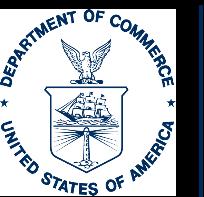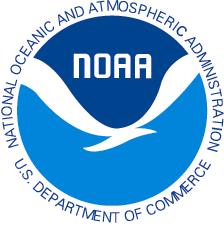
National Oceanic and Atmospheric Administration
NATIONAL
Southeast Regional Office
263 13th Avenue South
St. Petersburg, Florida 33701-5505
https://www.fisheries.noaa.gov/region/southeast
F/SER28:SS
Carlos Farchette, Chair
Caribbean Fishery Management Council
270 Luis Muñoz Rivera Avenue, Suite 401 San Juan, Puerto Rico 00918
Dear Mr. Farchette,
This letter advises the Caribbean Fishery Management Council (Council) that the Puerto Rico spiny lobster stock continues to be subject to overfishing based on 2023 data from the Puerto Rico Department of Natural and Environmental Resources (DNER).
The Puerto Rico Fishery Management Plan (FMP) specified overfishing and overfished status determination criteria for the spiny lobster stock in federal waters off Puerto Rico. In years when the stock is assessed, spiny lobster is determined to be subject to overfishing if the fishing mortality rate (F) exceeds the maximum fishing mortality threshold (MFMT). Spiny lobster is overfished if spawning stock biomass (SSB) is less than the minimum stock size threshold (MSST). In years when the stock is not assessed, spiny lobster is determined to be subject to overfishing if landings exceed the overfishing limit (OFL).
In a letter dated October 4, 2024, the National Marine Fisheries Service (NMFS) informed the Council the Puerto Rico spiny lobster stock was determined to not be overfished 1 but subject to overfishing 2 based on the results of the Southeast Data, Assessment, and Review (SEDAR) 57 Update Assessment, which used landings and length data through 2021. The most recent (2023 3) spiny lobster landings data available from the Puerto Rico DNER confirm our previous determination that the stock is subject to overfishing, as the total adjusted 4 commercial landings of spiny lobster in Puerto Rico in 2023 are 696,121 pounds (lbs) whole weight (ww), which is 158% of the 440,803 lbs ww OFL established for 2023 by Framework Amendment 1 and 163% of the current 426,858 lbs ww OFL established by Framework Amendment 2.
Section 303(a)(15) of the Magnuson-Stevens Fishery Conservation and Management Act (Magnuson-Stevens Act) requires the FMP to establish a mechanism for specifying annual catch limits (ACLs) at a level that ensures overfishing does not occur in the fishery, including measures to ensure accountability. For spiny lobster, the ACL and OFL are based on the combined federal and territorial landings reported by Puerto Rico commercial fishermen, and NMFS uses those data to monitor landings relative to those reference points. Because most
1 SSB (120 trillion eggs) > MSST (83.9 trillion eggs).
2 F (0.214) > MFMT (0.198).
3 Commercial landings provided by the Puerto Rico DNER experience a one to two year delay in availability.
4 Puerto Rico landings are adjusted using an expansion factor determined by DNER staff at the Fisheries Research Laboratory, which is based on intercept sampling of commercial fishermen.

spiny lobster harvest occurs in territorial waters outside the reach of federal conservation and management measures, 5 effectively constraining harvest to the catch limit and accounting for overages requires the support and cooperation of Puerto Rico DNER. For example, if the spiny lobster ACL is exceeded, NMFS may not have the ability to reduce the length of the fishing season by the amount necessary to prevent a future overage unless compatible regulations are implemented by Puerto Rico DNER.
NMFS’ National Standard Guidelines for implementing the Magnuson-Stevens Act encourage the development of collaborative conservation and management strategies in situations like these, including accountability measures (AM) for state/territorial and federal waters, to prevent overfishing of shared stocks and ensure their sustainability (50 CFR 600.310(f)(4)(iii)). Because the Puerto Rico spiny lobster stock has exceeded its ACL multiple times in the last few years, the Council is scheduled to review an options document for revising the spiny lobster AM at its August 2025 meeting. I encourage the Council to use this opportunity to consider new ways to partner with Puerto DNER on the management of this important fishery to end and prevent overfishing while we await the results of the benchmark assessment for spiny lobster (SEDAR 91), which is expected to be completed and reviewed by the Council’s Scientific and Statistical Committee later this year.
Sincerely,
Andrew J. Strelcheck Regional Administrator
Cc: F/SEC – Clay Porch
F/SER2 – Heather Blough
F/SER28 – Maria Lopez, Sarah Stephenson
CFMC – Miguel Rolon
5 Of the 2023 commercial landings with location information reported, 96% were harvested from Puerto Rico territorial waters and 4% were harvested from federal waters. This is consistent with previous years in which the majority of spiny lobster harvest was reported in territorial waters where federal management is not applicable.
